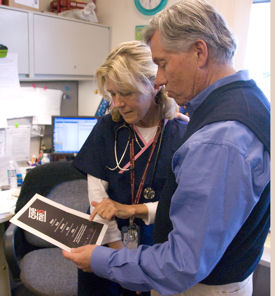Dividing the pie by keeping it simple
Looking for the perfect compensation plan for your practice? Here's the secret.
Looking for the perfect compensation plan for your practice? Here's the secret: there isn't one. But if there is one golden rule to compensation plans, it is “the simpler, the better.”
As owners of a practice, you must decide what your goals are, what is fair, and what will enable you to work as a team rather than as competitors. It is critical that each physician understand the income distribution plan and that it is easily administered on a monthly basis. Simplicity in the formula is key because it is important to understand how a busy practice's workload affects income. If there are too many elements in the formula then it becomes difficult to know how to work most effectively.
There are several ways to divide the pie. No single formula is correct, nor is any plan set in stone. Circumstances change and so must the compensation formula.
The team-oriented model, or equal-division method, collects all the revenue, pays all the bills including physician base salaries and benefits, and then splits any remaining income equally among the owning physicians.
Other methods divide up the revenue based on productivity using charges, income, or relative value units (RVUs). Some consider pay based on RVUs as the fairest method because it reflects work effort rather than financial results.
The full allocation model follows the “eat what you kill” philosophy—dividing up the expenses and revenue according to a formula based on individual physician production. Some allocate based on percent of total charges and some based on percent of collections.
A good compromise is a blended model between RVUs and full allocation, which combines equal division of expenses with a productivity-based distribution of income.
If, over time, the practice grows, the service mix changes, or physician hours or duties change, then the compensation method can adjust accordingly. For example, if one of the physicians in the practice takes on a leadership role at the hospital that takes time away from patient care, or another pre-retirement physician wants to cut back his hours, the formula may need to be adjusted. If a physician begins offering a cash-based service such as a travel clinic, the formula may need to be divided into “pots” to allocate and incentivize appropriately. Changes can be phased in over time, such as by changing the percentage allocation, or all at once, depending on how adaptable the individual physicians are.
In the end, most practices choose some split between an equal base pay and a productivity-based compensation bonus. The most important thing in determining the optimum methodology for the group is that all physicians agree on what they want to accomplish. This requires open discussion about practice philosophy and goals. And honest communication is always healthy.
For more information on “Income Distribution and Partner Buy-Ins,” go online. This guide offers suggestions on how to handle leadership pay, partner buy-ins and buy-outs, and buy-sell agreements.





